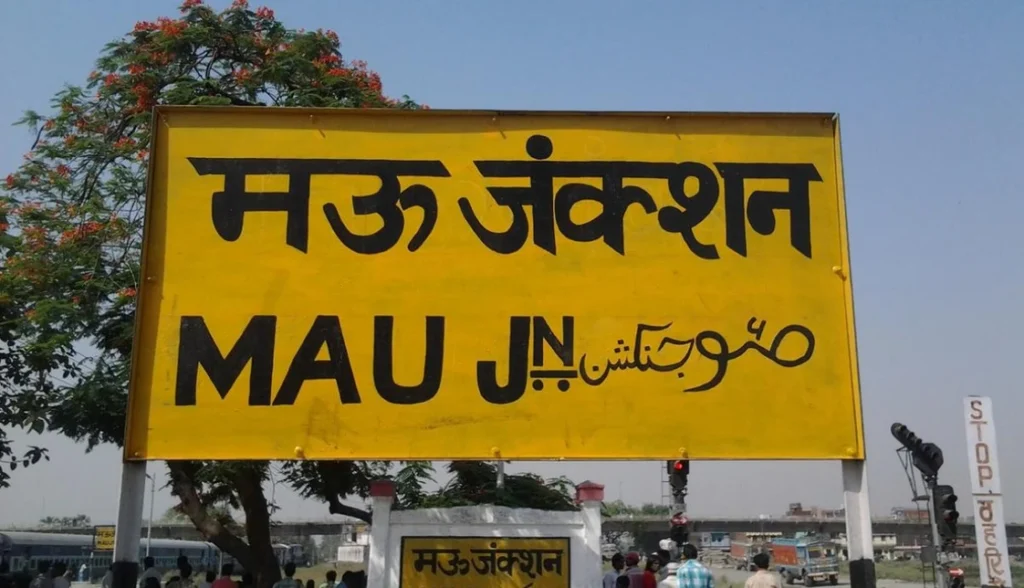Discover Mau, Uttar Pradesh – a land of rich weaving heritage, cultural traditions, and historical charm. Explore its craftsmanship, history, and vibrant culture!

Explore Mau Where Tradition Craftsmanship & History Shine
Mau District, situated in the eastern part of Uttar Pradesh, India, is a region of historical significance, cultural diversity, and economic vitality. Covering an area of around 1,706 square kilometers, Mau District is renowned for its rich heritage, agricultural prominence, and vibrant local communities.
The district’s history can be traced back to ancient times, with mentions in various historical texts and scriptures. It has witnessed the rise and fall of various empires and dynasties, leaving behind a mosaic of architectural marvels and cultural remnants. From temples to mosques, Mau’s landscape is adorned with structures that reflect its religious and architectural heritage.
Agriculture is the backbone of Mau’s economy. The fertile Gangetic plains provide a conducive environment for the cultivation of a variety of crops, including rice, wheat, sugarcane, and pulses. The district also has a significant silk industry, with sericulture being a traditional occupation for many. The shimmering silk produced in Mau is not only sought after within the country but also finds its way to international markets.
The cultural diversity of Mau is an enchanting blend of various traditions and practices. The festivals celebrated here showcase this diversity, with people from different communities coming together to participate in each other’s festivities. Eid, Diwali, Holi, and Chhath Puja are some of the major festivals that bring the district alive with colors, lights, and camaraderie.
The local cuisine of Mau is a delightful journey for the taste buds. Influenced by its geographical location and cultural mix, the food here boasts a range of flavors and dishes. From the spicy chaats and sweets to the delectable Biryani, the food scene in Mau reflects the fusion of tastes that the district is known for.
Education has seen significant improvements in Mau over the years. Schools and colleges are now more accessible, leading to a rise in literacy rates. This has contributed to the empowerment of the local population and the development of a skilled workforce. Efforts are also being made to promote vocational training and technical education to cater to the evolving job market.
In recent years, Mau has embraced modernization while holding onto its traditional roots. The district has witnessed infrastructural developments, improved connectivity, and better healthcare facilities. This progress has led to improved living standards and increased economic opportunities for the residents.
As with any region, Maau District faces its share of challenges. Issues related to infrastructure development, unemployment, and environmental sustainability require attention. However, the district’s resilience, coupled with the collective efforts of its people and the administration, continues to pave the way for progress.
Famous Places in Mau district
Maau District in Uttar Pradesh, India, boasts a number of famous places that reflect its historical, cultural, and architectural heritage. From religious sites to architectural marvels, here are some of the prominent places to visit in Mau:
Chiraiyatand: This historical place is renowned for the centuries-old Chiraiyatand Math, a sacred site for devotees of Hinduism. The math holds spiritual and cultural significance, drawing pilgrims and tourists alike.
Dohrighat: Known for its historic and religious relevance, Dohrighat houses various temples and religious sites. The Durga Devi Mandir and the Hanuman Mandir are notable landmarks, attracting visitors seeking spiritual solace.
Maithan Dam: Located on the Ghaghara River, the Maithan Dam offers a scenic escape. The tranquil environment, lush surroundings, and boating opportunities make it a popular spot for both locals and tourists.
Ghosi: This town is famous for its ancient mosque, the Jama Masjid. The intricate architecture of the mosque showcases a blend of Indian and Islamic design elements, making it a sight to behold.
Jama Masjid, Mau: Another significant mosque, the Jama Masjid in Mau city, stands as a testament to the region’s historical and architectural heritage. Its grandeur and intricate details captivate visitors.
Jangal Kaudia: A picturesque forest area located near Ghosi, Jangal Kaudia offers a serene natural retreat. The lush greenery, chirping birds, and fresh air make it an ideal spot for nature enthusiasts and picnickers.
Sohna Mosque: This ancient mosque in Kotwali town is a reflection of Mau’s diverse cultural influences. With its distinct architecture, it stands as a symbol of the district’s historical and religious fabric.
Ramrekha Ghat: Situated on the banks of the Ghaghara River, Ramrekha Ghat holds immense religious significance for Hindus. Devotees gather here for rituals, prayers, and religious ceremonies.
Bilariyaganj: This town is known for its impressive Bilariyaganj Fort, which is a testament to the region’s historical past. The fort’s architectural intricacies and historical relevance draw visitors interested in exploring the area’s heritage.
Gandhi Ashram: Mau District is also home to the Gandhi Ashram, which pays tribute to the principles of Mahatma Gandhi. It serves as a place for reflection on his teachings and the struggle for India’s independence.
These famous places in Mau District provide a glimpse into the district’s rich tapestry of history, spirituality, and natural beauty. Visitors can immerse themselves in the cultural heritage, architectural wonders, and peaceful landscapes that define this unique region.
Read More :-
Mathura UP Land of Krishna Divine Heritage & Spiritual Bliss
